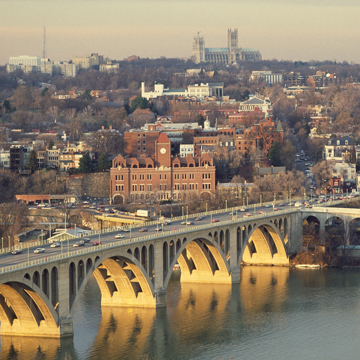Connecting the District of Columbia with Virginia across the Potomac River, the Francis Scott Key Bridge is one of the vital segments of the economic dreams of the city's early promoters. Key Bridge replaced the 1833–1834 Aqueduct Bridge, which was part of the man-made water-based system linking Alexandria to the Chesapeake and Ohio Canal. The Aqueduct Bridge enabled products in canal boats to cross the Potomac River without being unloaded into other vessels. After the Civil War, a roadway replaced the boat channel.
As streetcar and later automobile traffic proliferated by the early twentieth century, Aqueduct Bridge was deemed inadequate.








